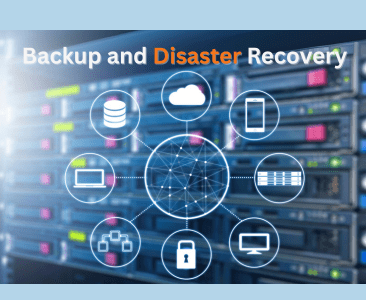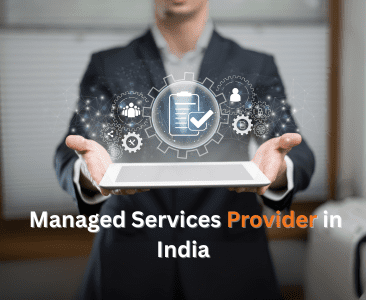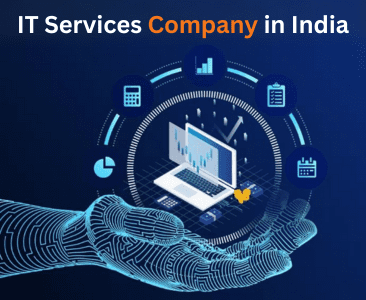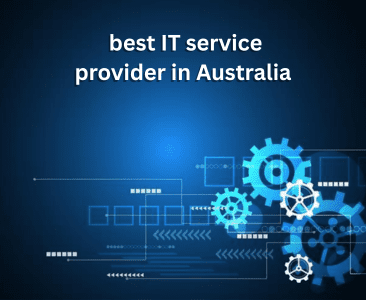In today’s digital era, businesses and individuals alike are increasingly relying on advanced technologies to streamline operations, enhance scalability, and drive innovation. Among these technologies, cloud computing stands out as a transformative force. When we talk about cloud computing services providers, we’re referring to the companies that offer the infrastructure, platforms, and software necessary to harness the power of the cloud. These cloud computing services providers have revolutionized how data is stored, processed, and accessed, making it possible for organizations to operate without the burden of on-premises hardware.
The rise of cloud computing services providers can be traced back to the early 2000s, but their impact has accelerated in recent years due to the demand for remote work, big data analytics, and AI integration. Leading cloud computing services providers like Amazon Web Services (AWS), Microsoft Azure, and Google Cloud Platform (GCP) dominate the market, but there are numerous others catering to niche needs. This blog post will delve into the world of cloud computing services providers, exploring their offerings, benefits, challenges, and future trends. By the end, you’ll have a comprehensive understanding of why choosing the right cloud computing services providers is crucial for modern enterprises.

Understanding Cloud Computing Basics
Before diving deeper, it’s essential to grasp what cloud computing entails. At its core, it involves delivering computing services over the internet, including servers, storage, databases, networking, software, analytics, and intelligence. These services act as gatekeepers to resources, allowing users to pay only for what they use rather than investing in physical hardware.
There are three primary models: Infrastructure as a Service (IaaS), Platform as a Service (PaaS), and Software as a Service (SaaS). IaaS provides virtualized computing resources, PaaS offers a platform for developing and deploying applications, and SaaS delivers software applications over the internet. Providers often blend these models to create hybrid solutions tailored to customer needs.
The appeal lies in flexibility. For instance, small startups can scale up without massive upfront costs, while large corporations can optimize IT budgets. According to industry reports, the global cloud market is projected to grow exponentially, with these technologies playing a pivotal role in this expansion.
Major Cloud Computing Services Providers in the Market
Navigating the crowded marketplace of cloud solutions requires familiarity with the key influencers who shape the ecosystem. Among them, Amazon Web Services (AWS) stands out as the undisputed frontrunner, having pioneered the modern cloud era since its launch in 2006. With a sprawling portfolio exceeding 200 fully featured services hosted across more than 100 global data centers, AWS empowers businesses to build virtually anything from simple websites to complex AI models. Iconic offerings like the Elastic Compute Cloud (EC2) for scalable virtual servers and the Simple Storage Service (S3) for durable object storage have become indispensable tools, forming the backbone for countless enterprises seeking dependable and versatile solutions.
Hot on AWS’s heels is Microsoft Azure, a powerhouse that excels particularly in environments already intertwined with the Microsoft ecosystem. For organizations deeply invested in Windows Server, Office 365, or Dynamics, Azure’s seamless integration provides a natural extension, minimizing disruption during adoption. What truly differentiates Azure are its robust AI and machine learning tools, such as Azure Machine Learning and Cognitive Services, which enable rapid prototyping of intelligent applications. Spanning over 60 regions worldwide, Azure guarantees low-latency performance, ensuring that users from Tokyo to Toronto experience responsive access to their data and applications, a critical factor in an increasingly globalized business landscape.
Completing the trio of industry titans is Google Cloud Platform (GCP), celebrated for its deep-rooted expertise in data analytics and machine learning, inherited from Google’s storied legacy in search algorithms and big data processing. GCP’s suite of services, including the lightning-fast Big Query for massive data warehousing and TensorFlow for open-source ML frameworks, positions it as the go-to choice for data-centric organizations aiming to extract actionable insights from petabytes of information. Its commitment to open-source technologies and developer-friendly tools further enhances its appeal, fostering a vibrant community of innovators.
Of course, the landscape extends far beyond these behemoths. IBM Cloud distinguishes itself with a strong emphasis on hybrid cloud architectures and emerging technologies like blockchain and quantum computing, making it a preferred partner for legacy enterprises undergoing digital transformation. Oracle Cloud, with its unparalleled prowess in enterprise database management, caters to sectors demanding high-performance relational databases and ERP systems. In the Asia-Pacific region, Alibaba Cloud reigns supreme, offering cost-effective, regionally optimized plans that support the e-commerce giants and fintech innovators of the East. Meanwhile, nimble upstarts like Digital Ocean and Linode are winning over individual developers and small teams with their straightforward, budget-friendly interfaces that prioritize simplicity over overwhelming feature sets.
Each of these prominent players brings a distinct set of strengths to the table, tailored to different priorities. AWS shines in the sheer breadth and depth of its service catalog, ideal for comprehensive builds; Azure leads in effortless enterprise integration and compliance; and GCP pushes the envelope with cutting-edge innovation in data science. Ultimately, businesses must conduct a thorough self-assessment of their technical requirements, workload types, and long-term strategic goals to identify the platform that aligns most closely with their vision, ensuring a harmonious partnership that maximizes return on investment.

Comparing Features and Pricing
One of the most pivotal decisions in adopting cloud technologies revolves around meticulously comparing the array of features and pricing structures available. The overwhelming majority of platforms adhere to a pay-as-you-go pricing model, which promises efficiency by charging only for consumed resources, thereby curbing waste and aligning costs with actual usage patterns. However, this flexibility comes with a caveat: without vigilant monitoring, expenses can balloon unexpectedly due to overlooked factors like data egress fees or idle resource retention.
Let’s examine AWS as a benchmark: As the market leader, it entices newcomers with a generous free tier that includes 750 hours of t2. micro EC2 instance usage each month, alongside 5 GB of S3 storage ample for testing and prototyping. Yet, as workloads intensify, costs for inter-region data transfers or premium storage classes can accumulate swiftly, necessitating tools like AWS Cost Explorer for granular tracking and forecasting.
Microsoft Azure counters with its own introductory credits up to $200 for the first 30 days coupled with sophisticated management utilities such as Azure Cost Management and Billing, which provide real-time dashboards and budget alerts to keep expenditures in check. This transparency is particularly valuable for hybrid setups, where Azure’s hybrid benefit programs allow users to leverage existing on-premises licenses, potentially slashing costs by up to 40%.
Google Cloud, ever the innovator, introduces sustained use discounts that automatically apply tiered reductions up to 30% for resources running consistently over a month, a boon for steady-state applications like web hosting. Feature-wise, all three juggernauts robustly support container orchestration through Kubernetes, but GCP’s Anthos platform elevates this with seamless multi-cloud and hybrid management, enabling orchestration across diverse environments without vendor-specific lock-in.
Security features warrant equal scrutiny, as they form the bedrock of trust in any cloud deployment. AWS’s Identity and Access Management (IAM) enforces granular role-based controls, while Azure’s Active Directory extends familiar enterprise identity management to the cloud. Adherence to global compliance frameworks ranging from GDPR in Europe to HIPAA for healthcare is a non-negotiable standard across reputable platforms, though the ease of achieving and auditing compliance can vary based on built-in tools and documentation.
That said, achieving true pricing transparency remains an art rather than a science. Built-in calculators on these platforms allow prospective users to simulate costs based on projected usage, but variables like traffic spikes or optimization inefficiencies often lead to variances in practice. Savvy organizations approach this holistically, factoring in the total cost of ownership (TCO), which encompasses not just direct fees but also migration efforts, training, and opportunity costs. By leveraging third-party benchmarking tools or engaging consultants, businesses can demystify these complexities and select options that deliver optimal value without compromising on performance or reliability.
Benefits of Engaging Cloud Computing Services Providers
The advantages of partnering with cloud computing services providers are manifold. Scalability is perhaps the most significant benefit; cloud computing services providers allow resources to be scaled up or down instantly, accommodating fluctuating demands without hardware investments.
Cost efficiency is another hallmark of cloud computing services providers. By shifting from capital expenditures to operational ones, organizations can redirect funds to core activities. Cloud computing services providers also enhance collaboration, enabling teams to access data from anywhere, which is vital in a post-pandemic world.
Innovation thrives with cloud computing services providers. Access to cutting-edge technologies like AI, IoT, and edge computing empowers businesses to stay competitive. For example, cloud computing services providers integrate machine learning models that can predict customer behavior or optimize supply chains.
Reliability and disaster recovery are bolstered by cloud computing services providers. With redundant data centers, these cloud computing services providers ensure high uptime often 99.99% or more. This minimizes downtime risks compared to traditional setups.
Environmental sustainability is an emerging benefit. Many cloud computing services providers, such as Google Cloud, commit to carbon-neutral operations, helping businesses reduce their ecological footprint through efficient cloud computing services providers.
Challenges Faced When Using Cloud Computing Services Providers
Despite the perks, working with cloud computing services providers isn’t without hurdles. Vendor lock-in is a common concern; once integrated with one of the cloud computing services providers, migrating to another can be costly and complex due to proprietary tools.
Data security and privacy remain top challenges for cloud computing services providers. While these cloud computing services providers invest heavily in security, breaches can occur, as seen in high-profile incidents. Users must implement best practices to complement the safeguards offered by cloud computing services providers.
Compliance with regional regulations can complicate matters for global operations. Cloud computing services providers must navigate laws like the EU’s GDPR, which may require data localization.
Performance issues, such as latency, can arise if cloud computing services providers’ data centers are far from users. Hybrid models, combining on-premises with cloud, are often recommended by cloud computing services providers to mitigate this.
Cost management is tricky; without oversight, bills from cloud computing services providers can spiral. Tools for monitoring are available, but they require expertise.
Lastly, the skills gap: Adopting cloud computing services providers demands trained personnel. Many organizations invest in certifications from cloud computing services providers to bridge this.
Future Trends in Cloud Computing Services Providers
Looking ahead, cloud computing services providers are poised for exciting developments. Multi-cloud strategies are gaining traction, where businesses use multiple cloud computing services providers to avoid dependency and optimize costs.
Edge computing is a trend driven by cloud computing services providers, pushing processing closer to data sources for faster responses in IoT and 5G applications.
Serverless architecture, offered by leading cloud computing services providers, abstracts infrastructure management, allowing developers to focus on code.
AI and machine learning integration will deepen, with cloud computing services providers embedding these into core services for automated insights.
Sustainability will influence choices; cloud computing services providers are investing in green data centers powered by renewables.
Quantum computing, though nascent, is being explored by cloud computing services providers like IBM and AWS, promising breakthroughs in complex computations.
Security enhancements, such as zero-trust models, will become standard among cloud computing services providers to counter evolving threats.
The metaverse and Web3 could reshape how cloud computing services providers deliver immersive experiences.
Case Studies: Success Stories with Cloud Computing Services Providers
Real-world examples illustrate the impact of cloud computing services providers. Netflix, a pioneer, relies on AWS as its cloud computing services provider to stream content to millions, scaling seamlessly during peak times.
Spotify uses Google Cloud as its cloud computing services provider for data analytics, personalizing recommendations for users.
Capital, One leverages multiple cloud computing services provider for hybrid banking solutions, enhancing security and agility.
These cases show how cloud computing services provider enable transformation across industries.
How to Choose the Right Cloud Computing Services Providers
Selecting a cloud provider involves assessing your needs, budget, and compatibility. Start by defining your objectives such as scalability, security, or innovation?
Evaluate support and SLAs from the cloud provider. Community resources and documentation are valuable.
Consider geographic presence; a cloud provider with local regions can reduce latency.
Test with free tiers offered by the cloud provider.
Seek reviews and analyst reports on cloud providers.
Finally, plan for migration; a reputable cloud provider offers tools to ease the transition.
Conclusion: Embracing the Cloud Era
In summary, cloud computing services provider are the backbone of modern digital infrastructure, offering unparalleled flexibility, innovation, and efficiency. From giants like AWS, Azure, and GCP to specialized players, these cloud computing services providers cater to diverse needs. While challenges exist, the benefits far outweigh them for most organizations.
As we move forward, staying informed about evolving trends in cloud computing services provider will be key to success. If you’re ready to explore how cloud solutions can elevate your business, visit vgicsglobal.com today for expert guidance and tailored services from leading cloud computing services providers.
Ready to Transform Your Business with Cloud Innovation?
Don’t let outdated infrastructure hold you back in the digital race. At VGICS Global, we partner with top cloud providers like AWS, Azure, and Google Cloud to deliver customized solutions that scale with your ambitions—whether you’re optimizing costs, boosting security, or unleashing AI-driven insights.
Take the first step today: Visit vgicsglobal.com for a free cloud assessment and unlock a 20% discount on your initial migration project. Schedule your consultation now and start building the future of your business!























